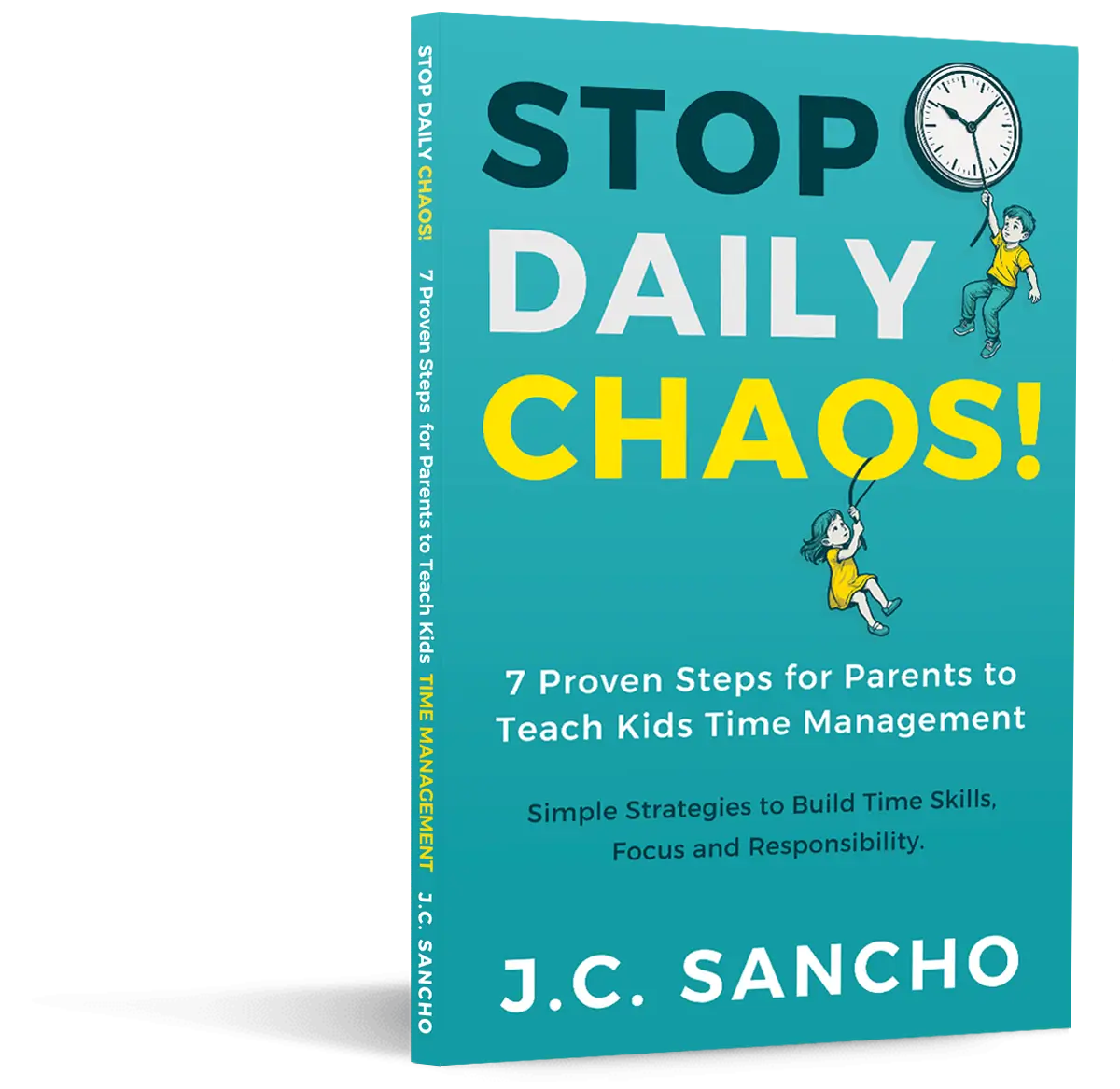Every parent reaches moments when emotions run high, patience runs low, and a simple request turns into a tug-of-war. These moments don’t mean something is wrong with your child or your parenting. They’re signs that your child needs support and structure. Clear limits help children feel safe, and calm delivery helps everyone move through tough moments with dignity.
This guide offers practical, easy-to-remember scripts you can use during everyday challenges. These phrases help you set firm limits without raising your voice or escalating the moment. When you rely on prepared language, you give yourself space to breathe, think, and lead the moment with confidence.
What Limit-Setting Really Means
Limit-setting isn’t about controlling a child. It’s about guiding them. Children thrive when boundaries are predictable, consistent, and communicated with warmth. Limits protect the rhythm of the home, support emotional development, and help kids understand the world around them. When limits are framed with empathy, kids learn to follow rules because they feel supported, not pressured.
Why Scripts Actually Work
Scripts lower the emotional load during conflict. They give you language that holds the boundary while keeping your nervous system steady. Kids respond to your tone long before they absorb your words, and scripts reinforce the calm leadership you want to bring into the moment.
When parents rely on steady, repeated phrases, the home feels predictable. Predictability lowers stress for both sides. Your child hears the same tone and message each time, and over weeks, this repetition strengthens cooperation and reduces pushback.
1. Scripts for Setting a Limit Calmly
Use these when you need to stop a behavior, transition to another activity, or reinforce a rule. They’re short, firm, and grounded in connection.
- “I won’t let you…”
This anchors the limit without blaming the child.
Example: “I won’t let you hit. I’ll help you stay safe.” - “It’s time to…”
A simple instruction, free of debate or frustration.
Example: “It’s time to get in the car.” - “The answer is no, and I hear that you’re upset.”
A boundary paired with validation. - “That choice isn’t safe. Here’s what we’re doing instead.”
- “You didn’t choose a snack, so I’ll choose one.”
This gives clarity without a power struggle.
These phrases help you hold authority without aggression. They reassure your child that even when emotions swell, the adult in the room can stay steady.
2. Scripts for Offering Choices Within Limits
Choices help kids feel capable. They offer autonomy, but within boundaries that keep life organized. These scripts work especially well with toddlers and school-age kids.
- “You can pick the red cup or the blue cup.”
- “We’re leaving in five minutes. Do you want to walk or do you want me to carry you?”
- “Shoes need to go on. Do you want to do it yourself, or do you want help?”
- “It’s cleanup time. Do you want to start with the blocks or the books?”
Choices shift the dynamic away from resistance. Kids who feel they have some control are less inclined to fight against the moment.
3. Scripts for Validating Big Emotions
Children cooperate more when they feel understood. Validation isn’t approval of the behavior; it’s acknowledgment of the emotion behind it. These scripts reduce defensiveness and calm the nervous system.
- “You didn’t want that to happen.”
- “You’re upset because it didn’t go the way you hoped.”
- “That was a big disappointment.”
- “You wanted more time, and it ended sooner than you expected.”
- “I hear you. I’m right here with you.”
Validation builds trust. When kids feel seen, they gain the emotional space required to shift from meltdown to problem-solving.
4. Scripts for Redirecting Without Power Struggles
Redirection gently guides children back on track without lectures or confrontation. These scripts keep the moment focused on what the child can do.
- “This isn’t safe. Let’s use your energy over here.”
- “That’s not for throwing. Balls are for throwing. Want to play catch?”
- “The answer is still no. Here’s something you can do.”
- “Your body wants to move. Let’s find a way that works.”
These phrases acknowledge your child’s impulse while gently steering them toward a more appropriate action.
5. Scripts for Transitions (the hardest moments of the day)
Many meltdowns happen during transitions. Kids need preparation, predictability, and calm leadership. These scripts support smoother shifts between activities.
- “Five-minute warning. After this, it’s time for bath.”
- “It’s time to go. Do you want to take the last turn or say goodbye to your toys now?”
- “I know stopping is hard. I’ll help you.”
- “Let’s do it together. One step at a time.”
A calm tone during transitions signals safety. Kids lean into the shift instead of resisting it.
6. Scripts for Staying Calm When Your Child Isn’t
Parenting in heated moments is demanding. These scripts help keep you grounded and prevent escalation. They protect the relationship, even when your child is losing control.
- “I’m going to stay calm. You’re safe.”
- “I won’t yell. I’ll wait with you.”
- “I hear how upset you are. I’m right here.”
- “I’ll talk with you when your body feels ready.”
- “We’ll figure this out together.”
These phrases signal leadership and regulate your own nervous system at the same time. Children learn emotional regulation from the adults around them, and scripts make that modeling easier.
7. Scripts for Holding Boundaries When Kids Push Back
Kids test limits to understand where the edges are. When they push, your calm consistency helps them feel grounded, not controlled. These scripts reinforce the expectation without adding pressure.
- “I hear you want something different. The answer stays the same.”
- “You’re upset. The limit is still here.”
- “I won’t debate this. We can talk after you’ve rested.”
- “It’s okay to be disappointed. The rule doesn’t change.”
Boundaries delivered with consistency become predictable. Predictability lowers anxiety and reduces power struggles over time.
8. Scripts for Repair After Conflict
Every family has hard moments. What matters most is how you reconnect afterward. Repair builds resilience and strengthens attachment.
- “That was a tough moment. I’m glad we’re together now.”
- “I didn’t stay as calm as I wanted. I’m working on it.”
- “We can try again. I love you.”
- “Thank you for talking with me. We learn together.”
Repair teaches kids that relationships withstand conflict. It also models accountability and emotional strength.
Common Mistakes Parents Face When Setting Limits
Even with the best intentions, parents meet obstacles. Recognizing these patterns is the first step toward consistency and confidence.
- Talking too much. Long explanations overwhelm kids. Short scripts work better.
- Changing the limit after pushback. This invites more resistance next time.
- Taking behavior personally. Kids push boundaries to understand the world, not to challenge your authority.
- Matching your child’s intensity. When you respond with equal volume or frustration, the moment escalates.
Limit-setting isn’t about perfection. It’s about steadiness. Each moment is another opportunity to lead with clarity.
Your Top Questions, Answered
What if my child screams or hits when I set a limit?
Hold the boundary and stay close. Use phrases like: “I won’t let you hurt me. I’m here to help you.” Consistency reduces aggression over time.
What if the scripts don’t work right away?
Scripts aren’t instant solutions. They are long-term communication tools. Keep using them with predictable tone and timing. Children adapt through repetition.
Should I give consequences when limits are crossed?
Natural consequences work best. Pair them with steady limits and calm follow-through.
A Closing Note of Encouragement
Setting limits while staying calm is a skill — one you build through practice, patience, and compassion for yourself. These scripts help you stay grounded, communicate clearly, and guide your child with confidence. Each boundary you hold strengthens your child’s sense of security and helps your home feel peaceful and predictable.
You’re building emotional stability one interaction at a time. And that’s powerful, steady parenting.



